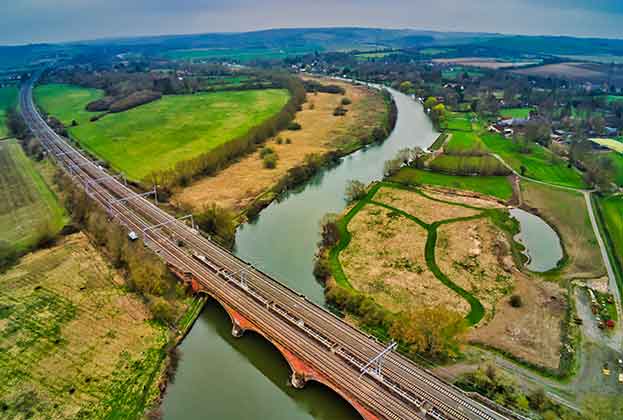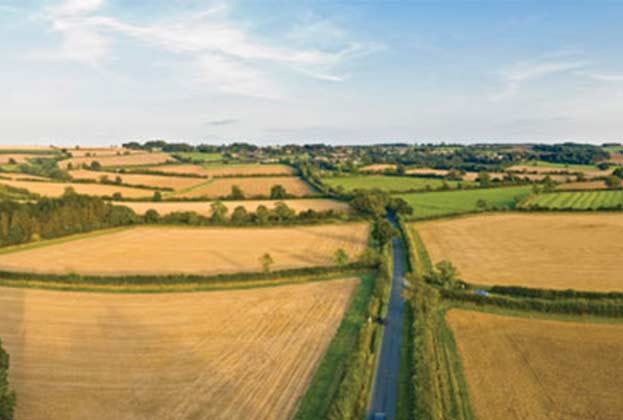What are the commercial requirements for the knowledge intensive sectors?
Savills own research to understand the needs of the office worker (What Workers Want 2019) highlights the importance of comfortable working conditions and the ability to commute with minimal time and cost. For the Oxford-Cambridge arc, it is imperative for the delivery of commercial offices and research and development (R&D) space to meet the needs of the workers, to attract and retain the best talent and grow the economy by attracting the best companies in the world.
The arc is bookended by two of the world’s leading educational institutions providing anchors of global significance. The mix of investing institutions, the appropriate supply of quality of labour and mobility solutions, including business-to-business and commuting, must be underpinned by the commercial real estate. This will reconceive the link between people, places, knowledge and industry. The knitting together of high-value, research-orientated sectors and highly creative fields, including industrial design.
The global rise of the ‘innovation district’ is a good starting point to understand the needs for the Oxford-Cambridge arc and how it must develop through time. The arc is well placed with the ingredients of globally renowned anchor institutions, established clusters and a very healthy mix of start-up organisations to stimulate innovation. All must be physically linked by integrated mobility solutions, both large-scale and micro-scale to support the transfer of people, products, investment and, importantly, knowledge and ideas.
What does the future office/science/technology park look like? Commercial developments must increasingly be configured with shared work and laboratory spaces and smaller, more affordable areas for start-ups. The more traditional R&D route to discovery is increasingly heading towards a roadblock and it is no surprise to see large pharma looking towards smaller companies, particularly the technology community for collaboration and assist with future discovery.
Investment driven growth
Across the Oxford-Cambridge arc, there are several clusters of world leading industries that have the potential to realise further synergies by enhancing the connectivity of the region. The delivery of the arc strategy is akin to the industrial revolution, where the interdependence of many sectors and input of capital, both money and people, led to waves of economic prosperity and the foundations for an improvement in living standards.
The arc in the next 10 years will be driven by those sectors that have attracted significant investment in the past five years. The key clusters in the region include; aerospace, life sciences, data and computing and motorsport, particularly Formula 1. Indeed, this is reflected in the flow of private equity and venture capital investment. The last five years has seen pharmaceutical, software (cybersecurity), automotive (including autonomous vehicles) and biotechnology sectors attract the largest amounts of capital. Oxford and Cambridge areas have seen the largest share of corporate investment in the past five years. The delivery of the appropriate quantum and quality of floorspace in the Milton Keynes and Bedford areas would see a wider share of investment in the future.
Encouragingly, the 2019 funding patterns show a rise from £10.2bn in 2018 to £27.4bn (170% increase to end-Q3 2019). In terms of venture capital, this has risen from £861m in 2018 to £1,076m as at end-Q3, a 25% growth rate despite the high level of political uncertainty in the UK.
The arc is home to ten universities and greater connectivity will encourage more collaboration between the institutions which will strengthen the clusters’ ability to commercialise ideas. The interdependency between educational institutions and corporates is absolutely key. The network of proposed “living laboratories” will help enable greater collaboration between businesses and academia in the region.
Furthermore, there will be increased use of assets such as Harwell, Silverstone and Cranfield, which will help establish and develop networks.
Creating new clusters
Office-based employment is set to grow substantially in the arc, according to the National Infrastructure Commission. If growth constraints are removed from the region and the area’s housing shortage is addressed this could result in 1.1 million new jobs. Milton Keynes is expected to experience the strongest commercial property development levels across the region. Furthermore a new university in Milton Keynes (MK:U) is being developed by Cranfield University and will be the first university to focus on digital skills. This will enrich the already existing highly skilled labour pool and benefit the arc directly.
Placemaking that embraces future methods of mobility will be essential to ensuring knowledge intensive industries continue to thrive in the region. The arc is well placed to respond to the demands of The Future of Mobility Grand Challenge which looks to reduce carbon emissions and congestion and make mobility available on a widespread basis. Related to this, the South East Midlands Industrial Strategy for example is committed to build on the existing R&D strengths of the area.
For example, there are over 4,000 high tech and innovation companies within an hour of Silverstone. Further investment into the region’s established clusters will be needed to accelerate innovation and pioneer the use of new technologies. The research, development and commercialisation of autonomous vehicles will continue across the arc and the new commercial development will need to be able to adapt to these technologies.
Oxford and Cambridge will remain the driving forces of the arc. However, there is a need for choice in terms of scale, commercial property price points and location. A polycentric model of expansion is credible to alleviate pressures on the two historic ends of the arc. For the area to achieve its full potential there needs to be commercial districts across the region which ensure that the benefits of clusters are not localised. To achieve all the aims, including the delivery of the ‘right’ housing, the commercial sector must deliver an additional 3.9 million sq. ft. of office/R&D floorspace in the next 10 years.
Longer-term, by 2050, the Oxford-Cambridge arc will have to deliver an additional 9.6 million sq. ft. – this is an office market the size of Reading or 1.2 times Milton Keynes office stock today. Some of this will be delivered in Oxford and Cambridge, but the emergence of new stock in the centre of the arc is critical for its success.
Read the articles within The Oxford-Cambridge Innovation Arc below.


.jpg)



.jpg)

